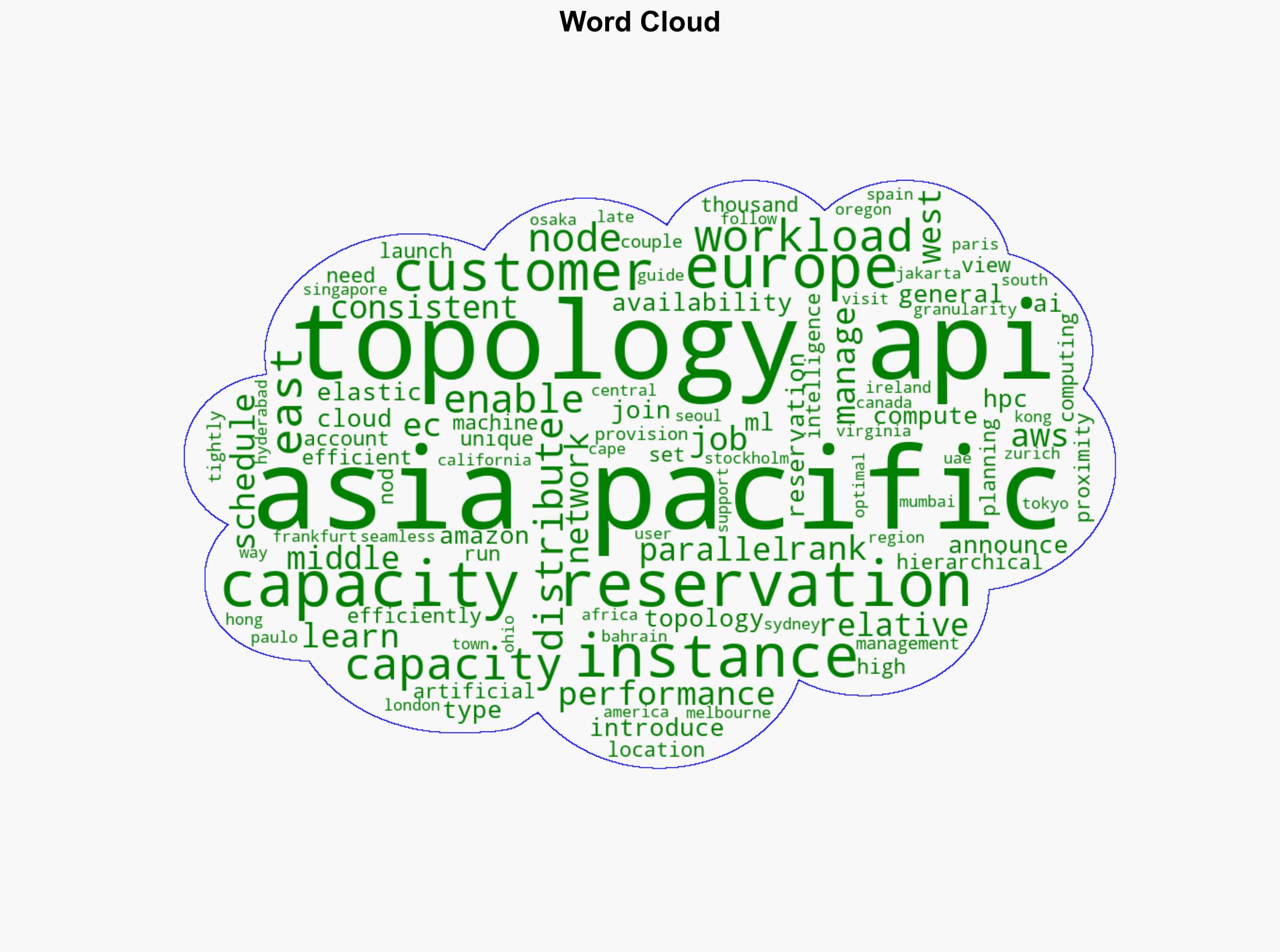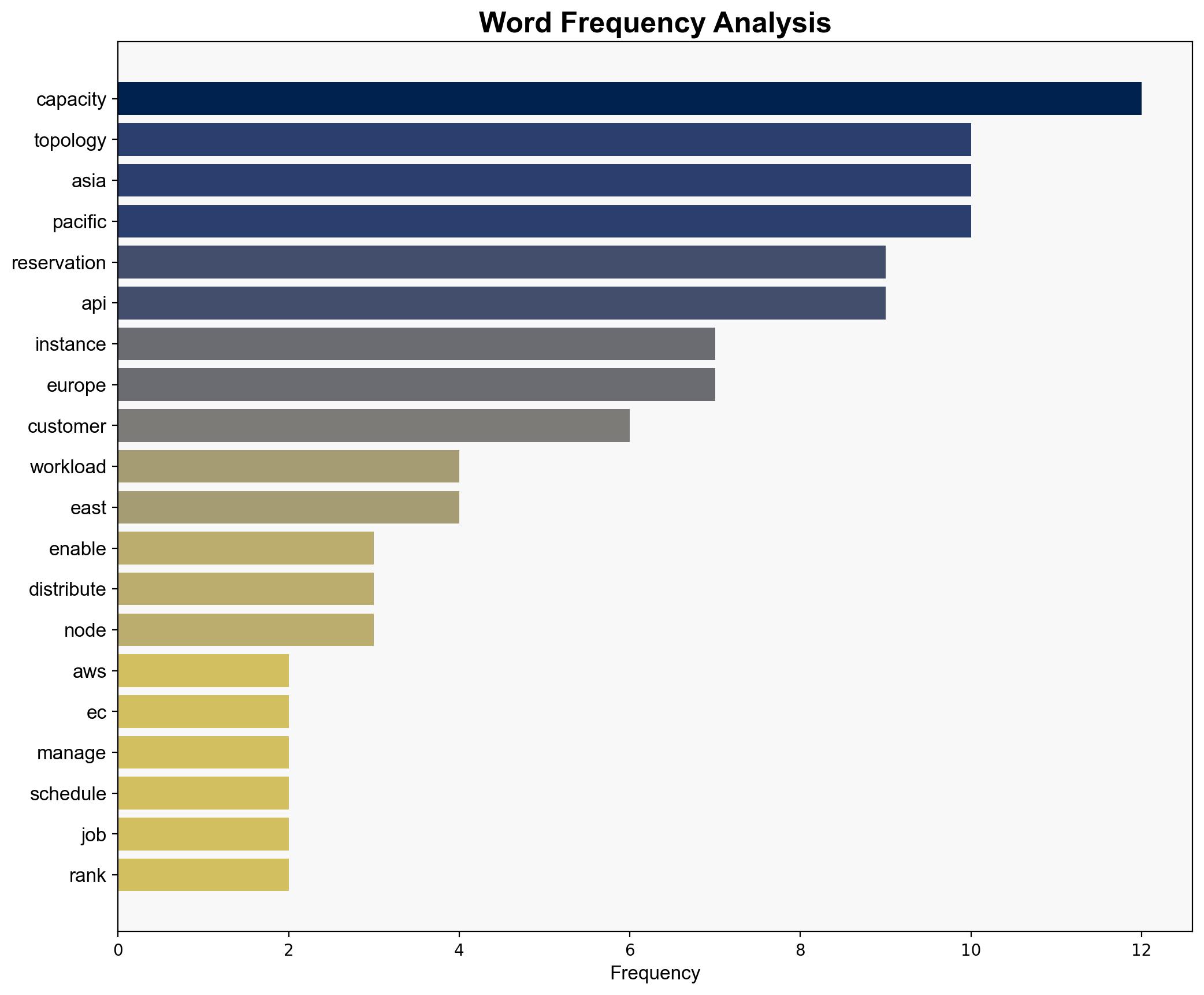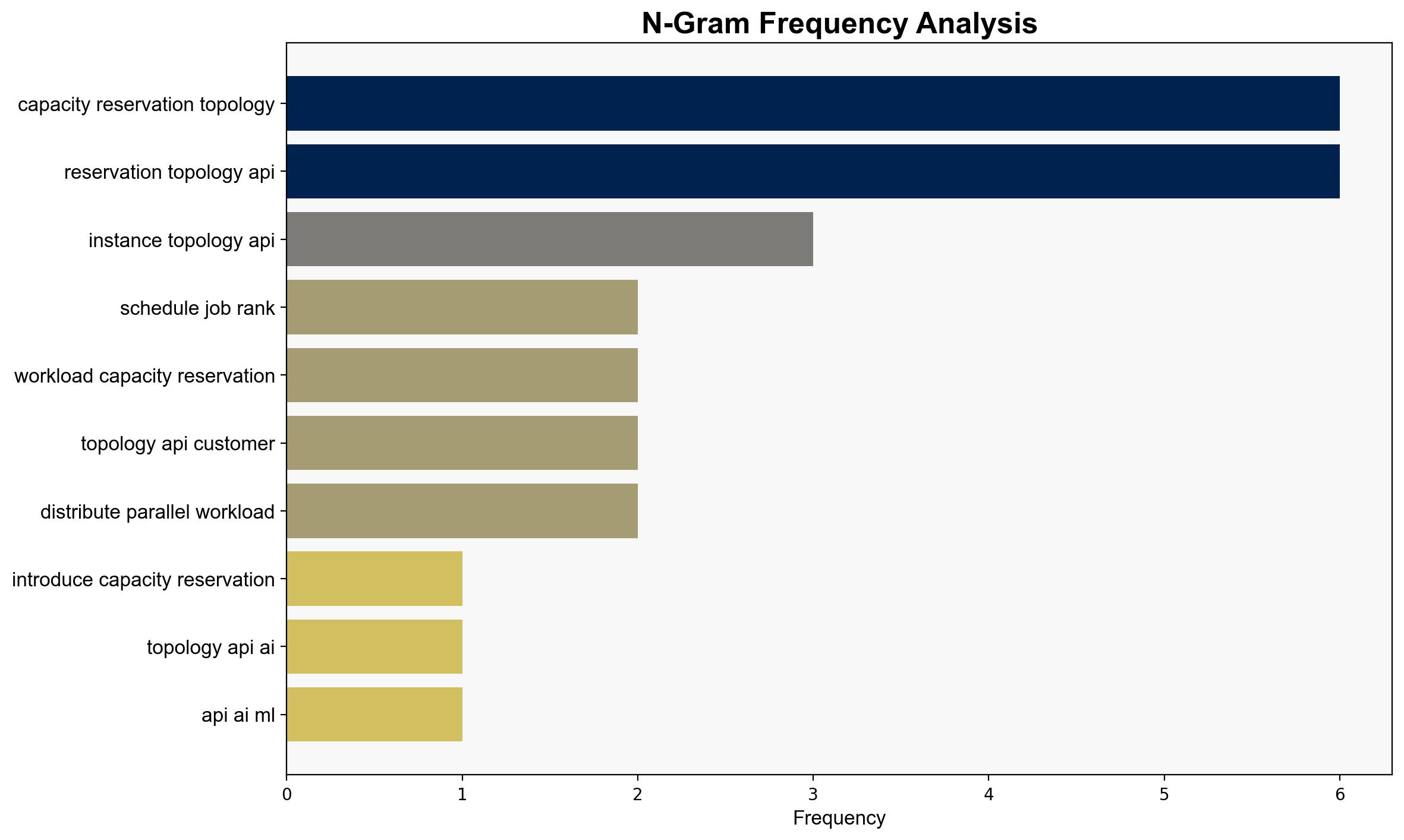Introducing the Capacity Reservation Topology API for AI ML and HPC instance types – Amazon.com
Published on: 2025-10-30
Intelligence Report: Introducing the Capacity Reservation Topology API for AI ML and HPC instance types – Amazon.com
1. BLUF (Bottom Line Up Front)
The introduction of the Capacity Reservation Topology API by Amazon Web Services (AWS) is likely a strategic move to enhance its cloud infrastructure’s efficiency and appeal to AI, ML, and HPC users. The most supported hypothesis is that AWS aims to consolidate its market leadership by offering advanced capacity management tools. Confidence level: High. Recommended action: Monitor AWS’s market share and customer feedback to assess the API’s impact and potential competitive responses.
2. Competing Hypotheses
1. **Hypothesis A**: AWS is introducing the Capacity Reservation Topology API to strengthen its market position by providing superior capacity management capabilities, thereby attracting more AI, ML, and HPC workloads.
2. **Hypothesis B**: The API is primarily a response to internal operational challenges, aiming to optimize AWS’s resource allocation and reduce overhead costs associated with managing large-scale cloud infrastructure.
Using ACH 2.0, Hypothesis A is better supported due to the strategic emphasis on customer-facing benefits and the broad regional rollout, indicating a focus on market expansion rather than internal efficiency alone.
3. Key Assumptions and Red Flags
– **Assumptions**: Hypothesis A assumes that AWS’s primary goal is market expansion. Hypothesis B assumes internal efficiency is the main driver.
– **Red Flags**: Lack of detailed performance metrics or customer testimonials in the announcement could indicate overstatement of benefits.
– **Blind Spots**: Potential competitive responses from other cloud providers are not addressed.
4. Implications and Strategic Risks
– **Economic**: Enhanced capacity management could lead to cost savings for AWS customers, potentially increasing AWS’s market share.
– **Cyber**: Improved infrastructure management may reduce vulnerabilities, but increased complexity could introduce new risks.
– **Geopolitical**: AWS’s expansion in diverse regions could face regulatory challenges or geopolitical tensions affecting cloud services.
5. Recommendations and Outlook
- Monitor AWS’s customer acquisition and retention metrics post-API launch to evaluate market impact.
- Assess competitor responses, particularly from Microsoft Azure and Google Cloud, to anticipate shifts in the cloud services market.
- Scenario Projections:
- Best: AWS gains significant market share, setting a new industry standard for capacity management.
- Worst: Competitors quickly replicate or surpass AWS’s capabilities, nullifying the API’s competitive advantage.
- Most Likely: AWS strengthens its position among existing customers, with moderate new customer acquisition.
6. Key Individuals and Entities
– Amazon Web Services (AWS)
– Competitors: Microsoft Azure, Google Cloud
7. Thematic Tags
cloud computing, AI and ML infrastructure, market competition, regional expansion




